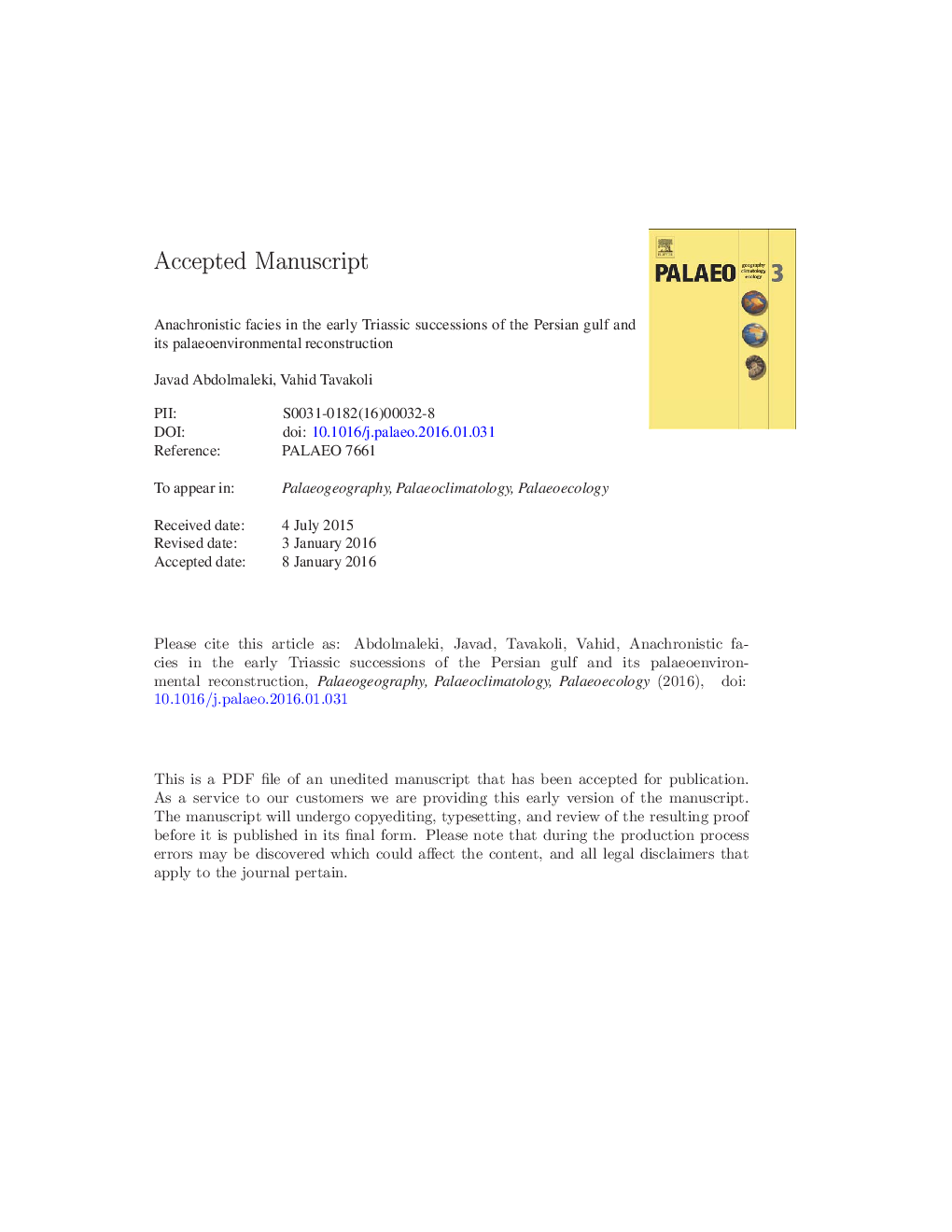| کد مقاله | کد نشریه | سال انتشار | مقاله انگلیسی | نسخه تمام متن |
|---|---|---|---|---|
| 6349433 | 1622145 | 2016 | 46 صفحه PDF | دانلود رایگان |
عنوان انگلیسی مقاله ISI
Anachronistic facies in the early Triassic successions of the Persian Gulf and its palaeoenvironmental reconstruction
ترجمه فارسی عنوان
رخساره های انحرافی در توالی های اولیه تریاس خلیج فارس و بازسازی محیط زیست آن
دانلود مقاله + سفارش ترجمه
دانلود مقاله ISI انگلیسی
رایگان برای ایرانیان
کلمات کلیدی
موضوعات مرتبط
مهندسی و علوم پایه
علوم زمین و سیارات
فرآیندهای سطح زمین
چکیده انگلیسی
The Permian-Triassic boundary corresponds with the largest mass extinction in the Earth's history, during which most living taxa were diminished. The delayed recovery time after this boundary was also one of the longest among all mass extinction events, and resulted from enduring unfavorable environmental conditions for living organisms. Such long-lasting harsh conditions during the Early Triassic resulted not only in the delayed recovery of organisms but also considerable changes in depositional processes, which formed 'anachronistic facies' all around the world. In this study, anachronistic facies and features are reported, for the first time, from the Early Triassic intervals of the Persian Gulf. Also, it aims to interpret the factors governing formation of these facies using sedimentological evidence. Accordingly, three types of microbial facies (including stromatolitic boundstones, oncoidal facies and thrombolytic facies), highly cemented facies/layers, large-ooid facies and coarse intraclastic facies are introduced as the anachronistic facies of the Early Triassic sequences in four giant and supergiant gas fields in the Persian Gulf region. Seemingly, the oscillations in CaCO3 saturation can be considered as the main cause for the formation of anachronistic facies in these intervals. The evidence shows that an increase in dissolved CO2 caused acidification of the sea water, CaCO3 dissolution and extinction. Carbonate dissolution causes reduction in dissolved CO2 and increase in Ca2Â + and HCO3â (super-saturation situation). Therefore, sea-water under-saturation and subsequent super-saturation in an organism-free substrate were the main causes for development of such anachronistic facies (in the super-saturation situation phase).
ناشر
Database: Elsevier - ScienceDirect (ساینس دایرکت)
Journal: Palaeogeography, Palaeoclimatology, Palaeoecology - Volume 446, 15 March 2016, Pages 213-224
Journal: Palaeogeography, Palaeoclimatology, Palaeoecology - Volume 446, 15 March 2016, Pages 213-224
نویسندگان
Javad Abdolmaleki, Vahid Tavakoli,
